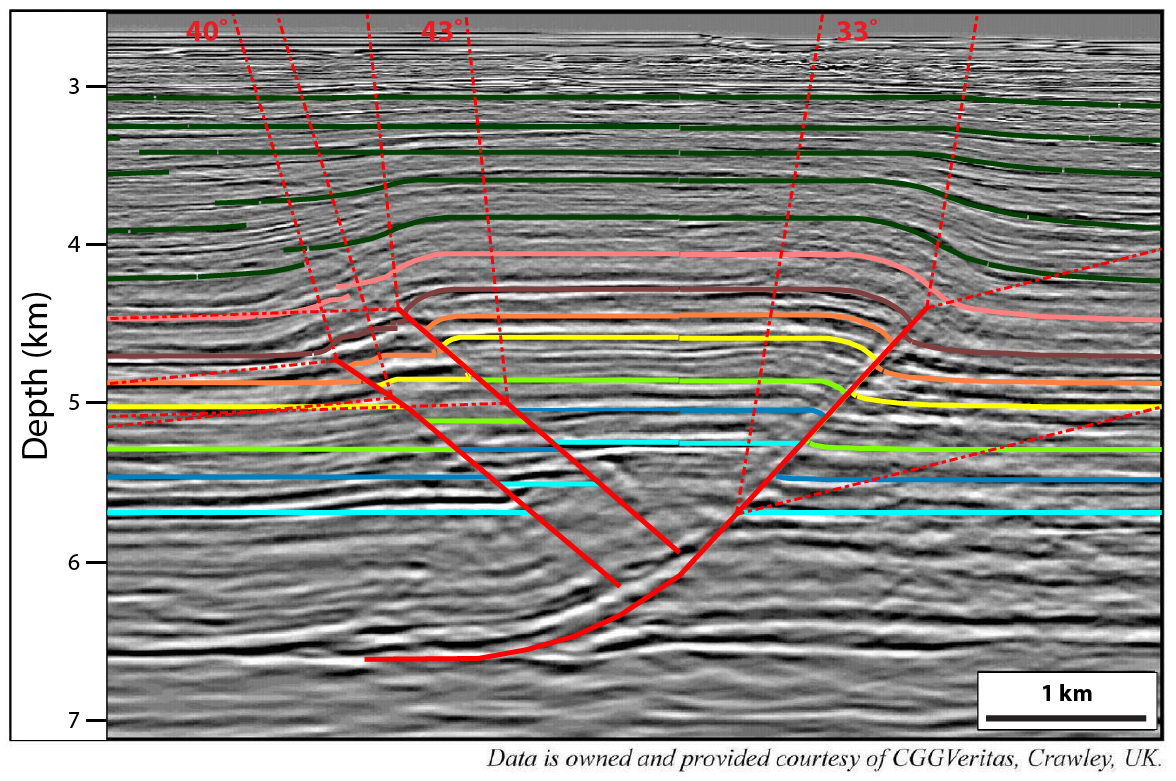Eichelberger, N. W., Hughes, A. N. and Nunns, A. G., 2014, Combining Multiple Quantitative Structural Analysis Techniques to Create a Robust Structural Interpretation, GSA Abstracts with Programs, v. 46, no 6 Vancouver BC.

The variation of bed area above regional with depth (area-depth relationship) definitively confirms that the fault flattens into a horizontal detachment. We model the entire structure using a combination of trishear for the forelimb and fault-bend related shear for the back limb. Modeling the backlimb geometry while maintaining the interpreted detachment depth requires a shear-axis angle of about 40°. In the interpreted data, two backthrusts rise at a similar shallow angle from the bend where the fault ramps up. The backthrusts are analogous to antithetic shear axes and accommodate folding related to the main fault bend. Horizontal displacements on the detachment independently calculated from modeling and area-depth agree within 10%, but exceed the shortening based on horizon length measurements. This discrepancy suggests significant subseismic layer-parallel shortening within the structure.
Distance-displacement relationships on the main fault show that as folding increases towards the final fault tip, displacement decreases, consistent with our trishear model. The main fault has an initial tip point deep within the pre-growth section and a final tip point near the base of the growth section. The back-thrusts have nearly constant displacements along their traces, indicating that these faults developed rapidly. These relationships are clearly illustrated by restoring the section above a horizon that is at the level of the initial tip point on the main fault.
We illustrate the overall kinematic development of the structure with a quantitatively balanced animation including both the main fault and the back thrusts.
Please refer to the poster presentation by Eichelberger et. al. 2014 for explanation of these videos. You may also download the presentation from the Summary tab.

